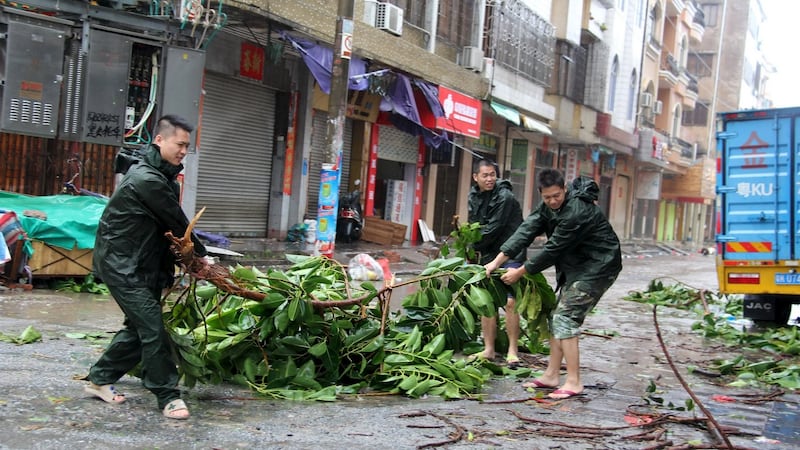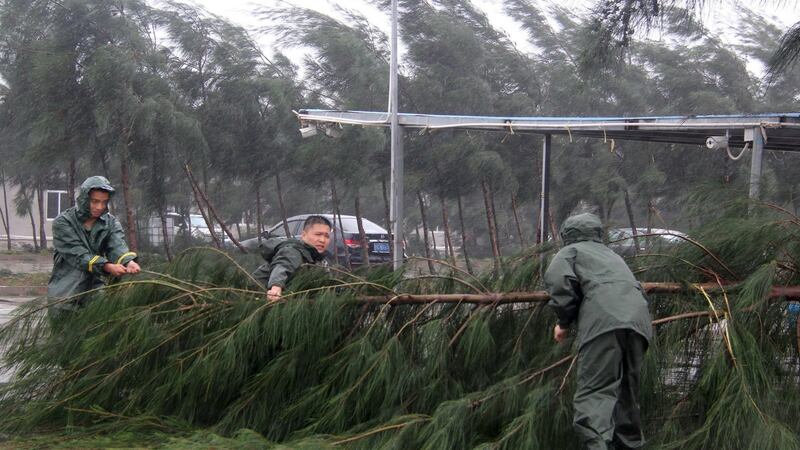Typhoon Mujigae has killed at least nine people and injured hundreds more, with many fishermen missing in their boats since it made landfall in Zhanjiang in the southern Chinese province of Guangdong on Sunday, local authorities said.
Mujigae, which means "rainbow" in Korean, had forced nearly 200,000 people to be evacuated, destroyed 748 houses and inflicted economic losses of 175 million yuan (€24.5 million) in Guangxi. It swept through Taiwan and the Philippines on Saturday, killing two people.
The typhoon is the 22nd typhoon this year to hit China and it affected farmland of 47,390 hectares, prompting a "red alert" response, the official Xinhua news agency reported.


The typhoon is affecting large swathes of southern China, including the tropical island province of Hainan, where thousands of Chinese tourists have decamped for the National Day Golden Week holiday.
The typhoon also prompted several strong tornadoes when it landed. In Zhanjiang, a coastal town, gales and torrential downpour brought a telecommunications blackout and cut off power and water in most areas, and also made it difficult to get information about the extent of the damage.
Some 12,700 fishing boats and 35,400 offshore workers were ordered to return to port.
A worker at a petrol station told China Radio International that the typhoon moved rapidly and flattened a makeshift house.
“The strong wind came from Foshan New City to the Furniture Expo Mall. In less than two minutes, it toppled trees and vehicles along the roads. At that time, the customers waiting to refuel their vehicles rushed into their cars. I was hiding behind a pillar. It is the first time I’ve seen such a strong wind,” he said.
The government of Fanyu District of Guangzhou told Xinhua that tornados hit Nancun and Shiqi on Sunday afternoon, leaving houses damaged and three people dead. Another 134 people were injured.
Guangxi Zhuang Autonomous Region an official in the department of civil affairs said typhoon Mujigae had affected over 1.44 million people by early afternoon on Monday. A falling tree in the regional capital of Nanning killed one person.
Storms also hit three districts of Foshan City on Sunday afternoon and three people were dead and another 89 were injured, the local government said.
Rescue efforts are underway across affected areas in Guangdong. Power supply has been restored for 90 per cent of residences in Fanyu, and the local utility, China Southern Power Grid, a local power supplier, sent workers from neighbouring areas to Zhanjiang, but said restoring power supply restoration would take longer due to the heavy damage to the local power grid.
In one small township called Daba, a village head Pang Meizhi told Xinhua that half of the village’s paddy fields would have no harvest at all, and telecommunications and power were unstable.












